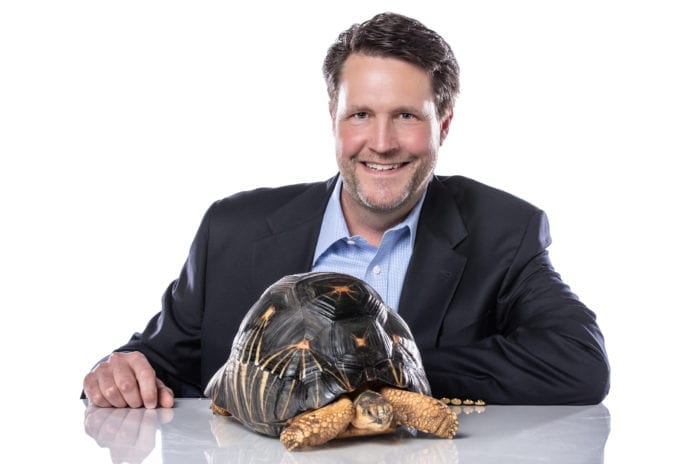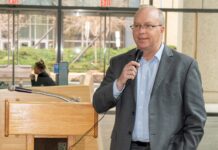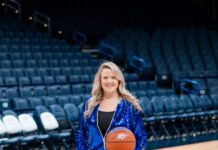Dwight Lawson, Ph.D., had a migratory childhood as an Air Force brat, with stints in Pakistan and several cities around the U.S. before settling in North Carolina. Harboring a lifelong interest in biology, Lawson attended the University of Pennsylvania for his undergraduate degree and the University of Texas, Arlington, for a graduate degree in quantitative biology.
Before joining the Oklahoma City Zoological Park and Botanical Garden in May 2014 as executive director/CEO, Lawson worked at Zoo Atlanta, the Wildlife Conservation Society in Cameroon, Africa, and the Stone and Webster Environmental Services in Boston. In his spare time, Lawson is involved with several animal conservation groups. We caught up with Lawson and got his thoughts on …
… the appeal of this job.
In addition to its great reputation locally and in the zoo and aquarium community, the OKC Zoo has three things that differentiate it from most other organizations: 1. Size. At more than 150 acres, we have room to develop, grow and provide appropriate habitats for the animals. 2. A great funding model. The OKC Zoo benefits from both earned income and some public support. This combined support enables us to provide our visitors with bold new ways to connect with wildlife and … to weather the recent closure due to the pandemic. 3. A very supportive and engaged community. Both the ZOOfriends membership base and local business community are strongly invested in the zoo.
… a day in the life.
There really isn’t an average day at the zoo – especially recently. While most of the day is spent with big picture planning, finances and supporting the zoo’s various teams, there is still plenty of opportunity to be involved with decisions about the animals and the tasks of daily operations. With several hundred team members, more than a thousand animals, and close to a million guests each year, there are countless moving pieces behind the scenes that contribute to us fulfilling our mission of connecting people to the world’s vanishing wildlife and wild places.
… his proudest moments and his goals.
Proudest moments: Surpassing one million visitors within a single year; expanding the zoo’s conservation programs; reaching and maintaining some of the highest visitor satisfaction scores among Association of Zoos and Aquariums-accredited zoos and aquariums in the U.S. – our on-going participation in a national study of visitor satisfaction has allowed us to identify and build on key touch points that matter to our mission and our guests.
Still to do: More on the above, as well as implementing our long-range master plan to enhance the zoo’s animal habitats and to create meaningful opportunities that truly inspire our guests to want to protect the wildlife around them and worldwide.
… his favorite animal and section of the zoo.
None that I will admit! However, I do have a house full of turtles and tortoises (in addition to two cats and two dogs) if that gives you any indication.
… an oddball snake story.
At the risk of my mom reading this, while working in central Africa years ago, I was bitten on the finger by a venomous snake. I went to the nearby hospital in the small rural town where I was based. When I told the doctor what happened, his exact reply was, “Well, what do you want me to do about it?” I find that funny. At least, now I do.
… the pandemic.
The OKC Zoo closed for 51 days starting on March 13, which is the beginning of spring break – our most attended week of the year. In fact, the 51 days we were closed usually account for about 50 percent of our annual earned revenue. Regardless of being closed to the public, we continued to operate in minimal fashion to care for more than 1,000 animals. Given the uncertainty of when we might open or how, we immediately developed dozens of revenue-generating ideas that would deliver on our mission and generate income for operations. We reopened on May 4, one of the first AZA-accredited zoos in North America to reopen, with a very structured, reservations-only Outdoor Safari Walk, that provided a great wildlife experience while also limiting attendance and ensuring ample social distancing.
Each week we gathered visitor feedback and readjusted – sometimes daily. Over the last few months, we’ve gradually expanded visitor access and evolved the experience to deliver the safest and most meaningful visit possible. Behind the scenes, we instituted safety measures for some of the animals that are vulnerable to COVID-19. The team caring for the primates which includes our chimpanzees, gorillas and orangutans for instance, wear personal protective equipment while working, so as not to potentially infect the apes.


























